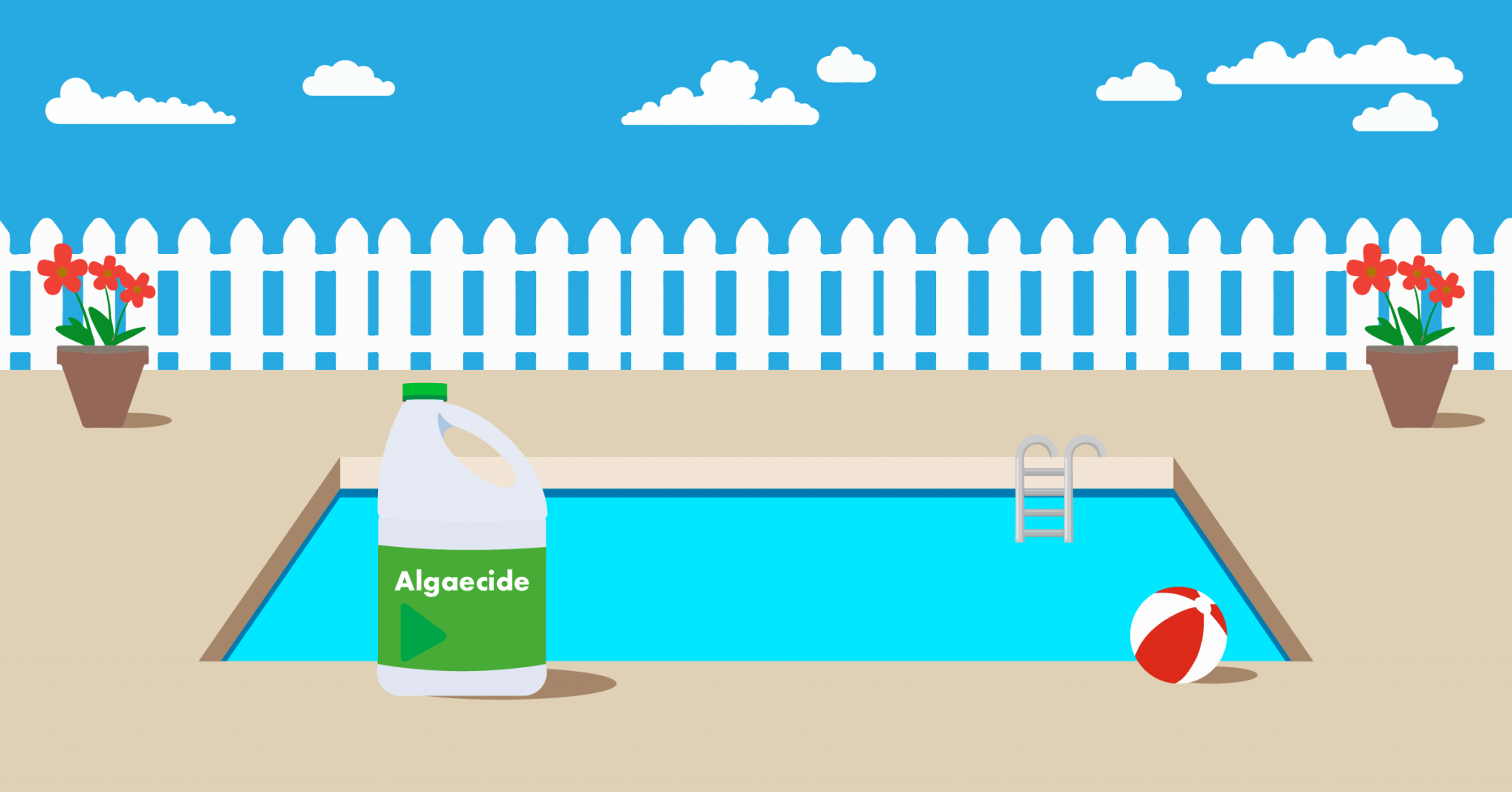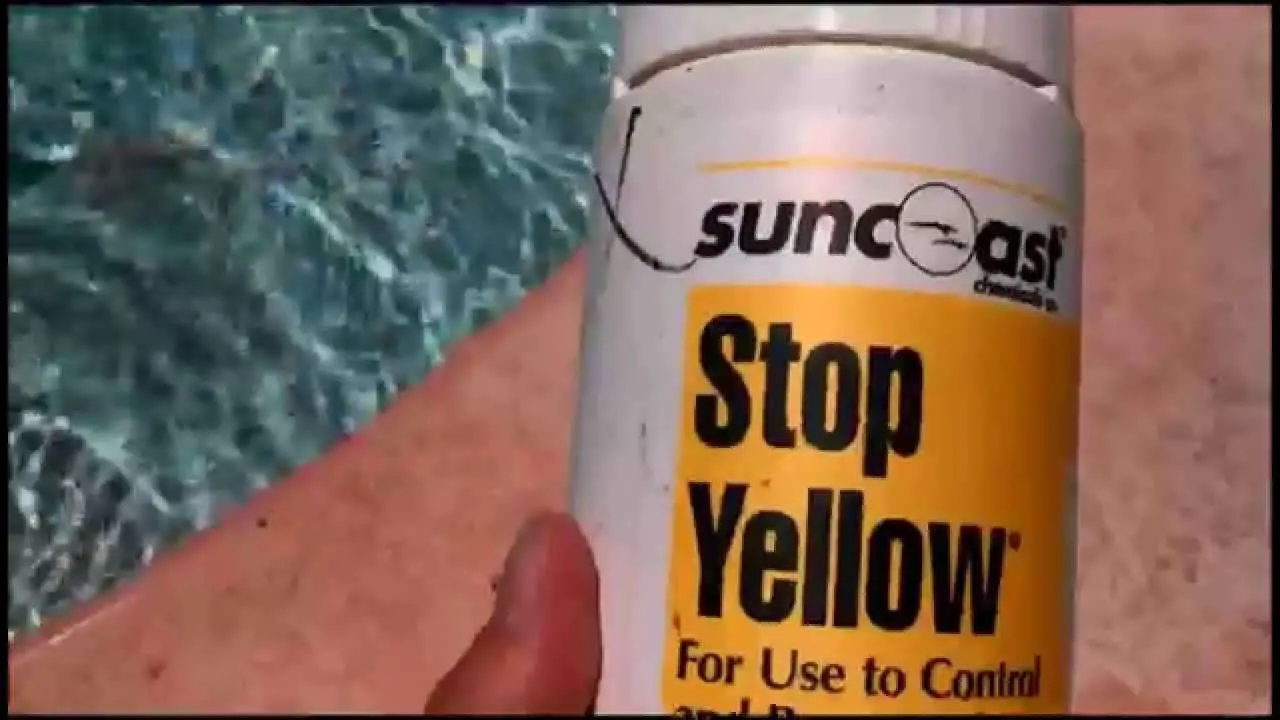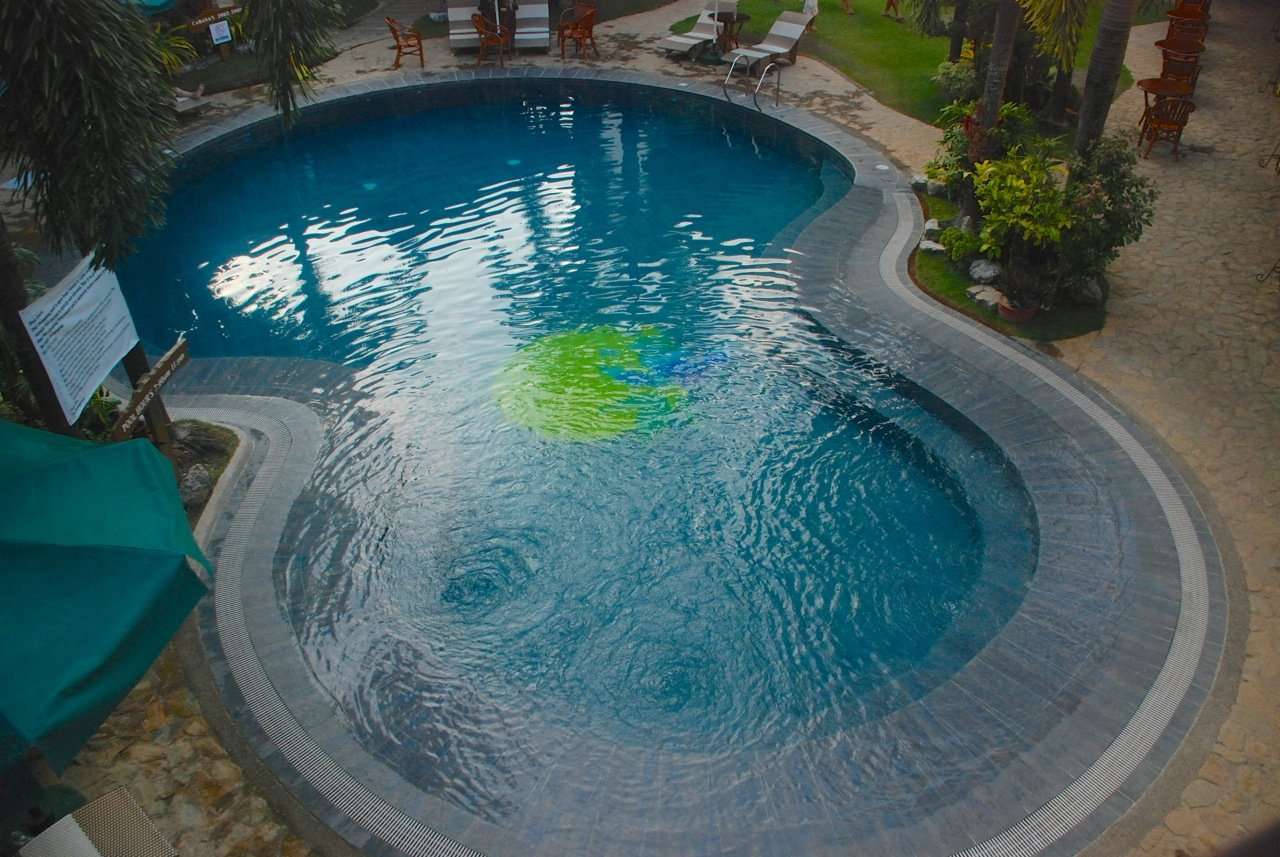What Are The Main Benefits Of Using Algaecide
Before you get carried away and purchase the best algaecide, you should get acquainted with the main benefits linked to this product. With that in mind, heres a list that will most likely convince you to give it a try.
- Killing Algae
Without a doubt, this is the main benefit worth noting. Algaecides are made to destroy algae. In this way, you can keep and maintain your pool clean and sanitized. Typically, an algaecide comprises of a powdered or a liquid substance, and it is made to chemically eliminate algae. And the best part is that it does that fast.
Although you might use chlorine in order to sanitize your pool, algaecides do the best job at killing algae. Beware that regular pool vacuums will likely do not do the trick. We recommend you still check out our reviews on the top above ground pool vacuum cleaners because you simply have to have one in your arsenal albeit for other purposes.
- Preventing the Regrowth of Algae
Many pool owners struggle with algae. Even if they do manage to get rid of them, in many instances, the algae will return. This has to do with the fact that an outdoor pool is exposed to elements such as wind and rain. But even when theres no rain, your pool might still end up infested with nasty algae.
This is why you should focus on maintaining your pool accordingly. And using algaecide might help you in this respect. Not to mention that using such a product requires little time, yet the results are noteworthy.
- Enjoy a Clean, Sanitized Pool
Different Types Of Pool Algaecide
Your investment in an effective pool algaecide is a crucial decision. There are a few different types of algaecides you can choose from, each with their own use cases. Below, we laid out the best pool algaecides on the market in each type and when to use them. Each of these products can kill all sizes of algae, isolated blooms, and in different stages of the algae growth.
What Happens When You Put Too Much Algaecide In A Pool
The presence of too much algaecide can lead to a foamy pool water. Air pockets within the filter system can cause bubbles on the pool surface as well. The bubbles and foam resulting from too much algaecide will be much smaller in size.
Is too much algaecide in Pool dangerous? Too much algaecide can cause foaming that can damage your filter. In some cases, too much algaecide can also cause eye and skin irritation. In addition to adding algaecide after shocking your pool, you should add algaecide to your pool water when closing down for the year.
Is too much algaecide bad? Too much algaecide can cause foaming that can damage your filter. If you have added an excess amount of algaecide, then there are a few options you can try. Once you have a serious algae problem, there are two crucial things to understand about getting rid of it.
When should I add algaecide to my pool? Algaecide should be added to your pool water on a weekly basis. Preventing algae is the key to fun in your pool. Algaecides act as a backup to your normal sanitization program and prevent algae from starting and growing in the pool. Algaecide should be added after every shock treatment.
How do I remove excess algaecide from my pool? https://www.youtube.com/watch?v=F2qu4KskwQs
You May Like: Vdara Escape Cabana
How Long After Adding Algaecide Can You Swim
Everyone wants their pool to be neat and clean. But thats not the case every time. Maybe you just had a pool party or your pool got out of chemistry, or maybe some random guy forgot to wash his swimsuit and decided to have a splash in your pool. In cases like this having a kind of greenish and cloudy pool filled with algae is pretty normal. It comes free with pool ownership.
But you surely wouldnt want to keep your pool like this right? You want your pool to look like transparent glass again. Adding a little bit of algaecide might get the job done. But how long after adding algaecide can you swim?
In this article, Im going to talk about exactly that. Youll get all the information you need about the usage of algaecide and whats the exact time you need to wait before using your pool again for swimming. But first, we need to know what algaecide is and how it works.
Shock The Monkeyor In This Case The Pool

If your pool gets infected by an outside source, shocking your water like its your full-time job between intense scrub-downs will usually get rid of the problem. Algaecide can help speed this process along, but its not entirely necessary to rid your pool of algae.
Unless, of course, youre dealing with chlorine-resistant algae like mustard algae or black algae. This is one of the few times you may need to consider using an algaecide. But even then, it should be used in addition to chlorine or other sanitizers, not instead of them.
Also Check: Does Lowes Install Above Ground Pools
Shock The Pool Or Add Oxidizer
Depending on whether you have a chlorine or biguanide pool, you can shock the pool or add oxidizer at this point. When shocking the pool to treat white water mold, regular shock treatment will not be enough. Quadruple the shock to three to four pounds per 10,000 gallons. This should bring the chlorine level up to 5 parts per million . You cannot use a regular shock in a biguanide pool, so adding an Oxidizer will be the best option. Add three to four gallons of oxidizer per 10,000 gallons of water to your pool in this case.
Should I Use Shock Or Algaecide First
Algaecide should be used after each shock treatment, so it has a better chance to support your chlorine as it works its magic. Be sure to shock your pool first, then when the chlorine levels of your pool return to normal, add the correct amount of algaecide to several places around your pool while your pump is running.
Read Also: Does Costco Sell Pool Chlorine
Test And Balance The Water
Once again, test your water using our Pool Calculator to make sure water levels are balanced.
At this point, you can enjoy your pool again. Monitor your pool for a few days to see if any mold returns, running your pump regularly. After five to seven days, you can add algaecide to complete the cleaning process. Algaecide will work with the chlorine or oxidizer to kill and prevent white water mold from returning.
Can I Add Shock And Chlorine At The Same Time
Are you unsure about the right answer to the question can I add shock and chlorine at the same time? If the answer is yes, then you will certainly have many reasons to go through this article. We will be sharing some useful information about shocking the pool and adding an algaecide in the water simultaneously.
Recommended Reading: Can Vdara Use Aria Pool
Why Add Algaecide During Winter
While algae usually stay dormant especially in colder temperatures, we have to take into account temperature fluctuations. Unusually warm winter days can give a window for algae to grow. Having algaecide in your pool can prevent that window from opening by killing algae even while theyre at their dormant phase.
How Do I Get Rid Of Algae In My Pool Fast
How Do I Get Rid of Algae In My Pool FAST? Vacuum Your Pool Manually. Automatic or robotic pool cleaners arent well suited to cleaning algae. Brush Your Pool Walls and Floor. Test and Balance the Water. Shock Your Swimming Pool. Filter Out The Pool Algae. Test Your Pool Water Again. Clean Your Pool Filter.
You May Like: Can Lice Live In Chlorine Pools
Do You Need To Add Algaecide To A Swimming Pool With A Salt Water System
Related Articles
It’s a common misconception that a saltwater pool system does not use chlorine as a sanitizer. Although it’s true that you don’t add chlorine directly, the salt you do add gets turned into chlorine by a salt chlorine generator, which uses the process of electrolysis to separate the sodium chloride molecules into free sodium and chlorine ions. The generator distributes the chlorine in a steady, controlled manner that makes the pool water easier on the skin and eyes than it would be if you dumped in the chlorine all at once.
In effect, this makes the water in a saltwater pool pretty much the same as the water in a regular pool as far as green algae are concerned, and if conditions are right, they will definitely grow. You can prevent this by shocking the pool at regular intervals with pool shock, waiting for about 24 hours and then adding an algaecide. The algaecide isn’t a requirement for saltwater pools, but there’s no reason not to use it. However, the best way to control algae is to keep the pool water balanced because algae love it when pH or total alkalinity gets too high.
Tip
An algaecide isn’t necessary to clear algae from a saltwater pool. Physically cleaning the algae and then shocking the water with pool shock works just as well.
Stain & Scale Chemicals

Using a stain and scale preventative chemical when closing your pool is always a good idea. These chemicals prevent mineral and metal staining, and should be added to the pool before disconnecting the filter pump and lowering the pool water, because its important to thoroughly distribute the chemical throughout the pool.
Stain Away is a sequestering agent, or chelator, that keeps minerals and metals tied up in solution and keeps them from staining your pool over the winter. For pools on well water with high levels of iron, magnesium or copper, use Natural Chemistrys Metal Free, which keeps minerals in solution without adding any phosphates to the pool. To avoid stains, this product is a must if you use well water.
For hard water areas, or those with high calcium hardness over 400 ppm, Natural Chemistry has another product called Scale Free. Its also recommended for salt water pools, to keep sodium in solution and keep it from mixing with organic matter, which can make a pool look dull and dirty.
And there you have it folks the answer to the question of what chemicals are needed to close a pool. As for how much, our closing kits are sized by pool size to make it easier, but your pool may need more or less it depends on how tight your pool cover fits, and how much sun and dirt it blocks. It also depends on the length of your off-season, and how clean and clear the water is when you close.
In The Swim Blog Editor
Don’t Miss: When Do Pools Open In Utah
What Is Algaecide And How Does It Work
Algaecide is not a quick solution to get rid of algae entirely in your pool. It is more often used as a preventative measure rather than a reactive treatment. These chemical compounds contain components that both kill algae but also stunt their growth in your pool.
Most of the algaecides on the market contain a copper base, usually derived from copper sulfate. These chemical compounds utilize metal as its primary atom, which helps attack algae much more effectively. Algaecides main job is to discourage the typical cellular growth process of algae. Though blocking cell division or energy transfer, they limit the creation of newer cell proteins, which help algae survive.
It is important to note that all pesticides, including algaecides, must be implemented following the product label registered with the EPA . When you use algaecides, please ensure that you are wearing the appropriate personal protective equipment, which will be recommended on the product label.
Is It Ok To Run Pool Pump 24 Hours A Day
Ideally, you should run your pump for 24 hours a day, but we know thats unrealistic , so lets look for an answer that keeps your pool clean and your wallet full. Generally running your pool pump for 12-hours a day is a good option. For a residential pool the water should turn over at least once per day.
You May Like: Are Pool Leaks Covered By Homeowners Insurance
Clorox Pool& spa Xtrablue Algaecide
This is another fast-acting algaecide that will do an excellent job at eliminating algae from settling in your pool. If you already have this issue, this will most likely help you.
The formula doesnt create any foam when you add it to the water. As for its efficacy level, it does a good job at killing and deterring algae from settling again in your pool water. You can expect it to do a decent job also in saltwater pools.
Many former users have included this product in their regular maintenance program. If you normally cope with algae, this would be a good idea worth trying.
Another advantage worth noting would be that you dont have to use this on a daily basis. In order to ensure that it works, you should use it on a weekly basis. This will save you both time and money. Also, if you want to obtain perfect results time after time, its a good idea to brush the surface of the pool.
Pros
- The formula is non-staining, meaning that it wont affect the liners or the walls of your pool.
- Versatile: you can use it in most types of pools
- Quick and effective action
Pool Shock: Shocking For Algae Removal
Welcome back to school, students! Summer is the perfect time to discuss algae and how to remove it by shocking the pool with Calcium Hypochlorite Ca2.
Chlorine is a Great Algaecide, I like to say. Faster kill rates and a more complete reaction than using algaecide or other oxidizers.
Cal Hypo is the perfect chlorine type to use to eradicate algae blooms powerful and economical.
Our discussion will focus on how much pool shock to use for complete algae removal, plus other tips on effective pool shocking.
Also Check: How To Read Clorox Pool Test Strips
Prevent Algae From Returning
All the algae should be dead and sitting at the bottom of your pool at this point. The dead algae is likely too fine to be vacuumed through your sand filter, therefore owners of sand filters must vacuum on the waste setting. Cartridge filter owners can vacuum up the dead algae but need to clean the filters thoroughly after doing so.
In the evening, chlorinate your pool with HTH Extra followed by adding a Phosphate Eliminating product to your skimmer to prevent algae from returning.
Different Types Of Algae
Algae can come in many different forms. Below are the main types of algae that you will make itself a home in your swimming pool:
- Green algae also known as blue-green algae, is the most popular type, and it needs sunlight, warmth, and water to survive.
- Black algae a strain of blue-green algae that is attracted to plaster pools and contains a thicker cap that offers extra protection against algaecides.
- Yellow algae this is a different variation of green algae, which is chlorine resistant and can still live without the help of sunlight.
- Red algae these algae are associated with a different bacteria genus and can survive without sunlight.
You May Like: How To Deter Wasps From Pool
Decide How Much To Use
After you have selected the correct algaecide for your needs, you will now be ready to begin preparing to use your algaecide in our pool.
In line with the advice we have already given you above, we strongly suggest that you take the time to thoroughly read through your owners manual before adding any solution to your pool, as it is important to keep in mind that algaecide solution will likely differ slightly depending, on the brand who has made it, as well as the overall quality of the algaecide in question, too.
Just like weve already mentioned above, the correct dosage of your algaecide will very much depend on what the manufacturer of the algaecide suggests to you, as well as the overall size of your algae-infested pool.
Easycare 0064 Pooltec Algaecide Clarifier And Chlorine Salt Cell Booster

If you want to reduce the use of chlorine in your pool, as it doesnt address the algae issue, this product might be a good alternative. That is mainly because it diminishes chlorine use by up to 65 percent.
This should make the job of maintaining your pool easier. A bottle should be enough for an average 20,000-gallon pool so, bear this in mind before ordering it. You should include 4 oz. of this algaecide on a weekly basis for 10,000 gallons of water.
This way, you can rest assured that the pool water will be algae-free, clean and clear. Plus, theres no waiting time after using the solution in your pool: you can swim right after the treatment.
Its also easy to use, meaning that you dont have to do anything overly complicated. All you have to do is pour the algaecide in the water and thats about it. Plus, it works against yellow, green and black algae alike. All in all, it works great.
Pros
- You can swim inside the treated water right away
Cons
- It doesnt eliminate the need for chlorine treatment altogether.
Recommended Reading: How To Replace Pool Tile
